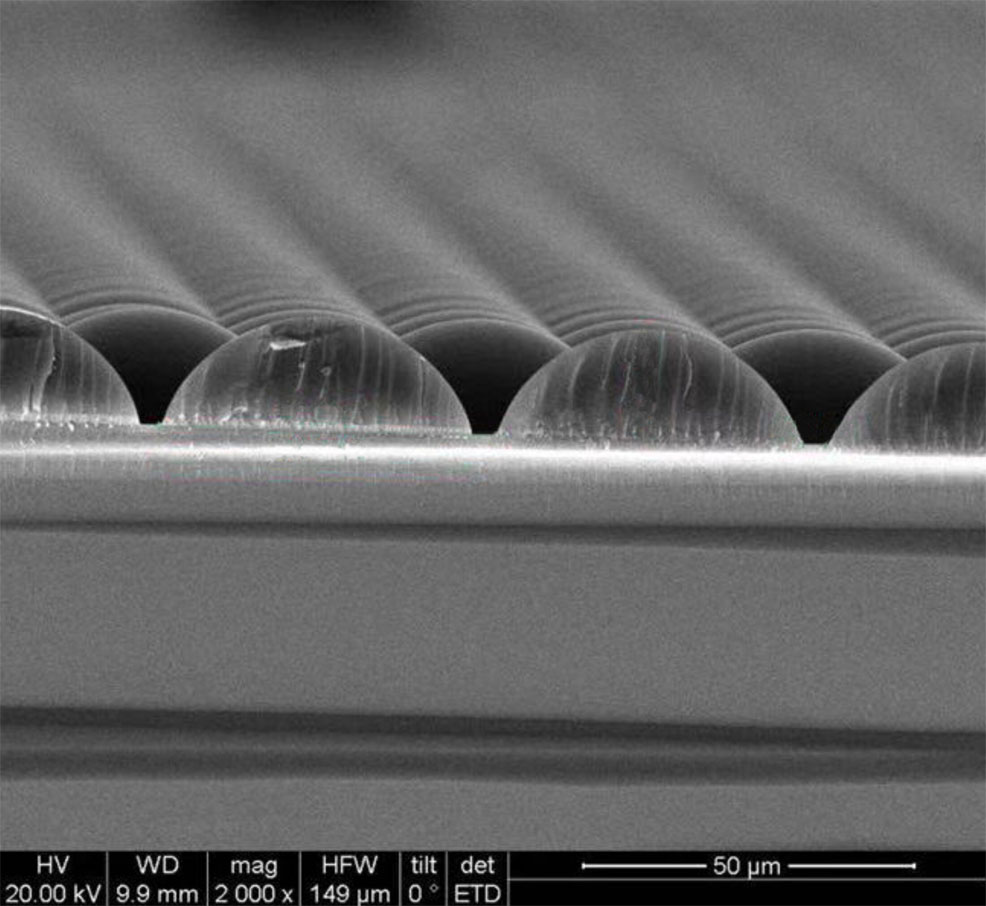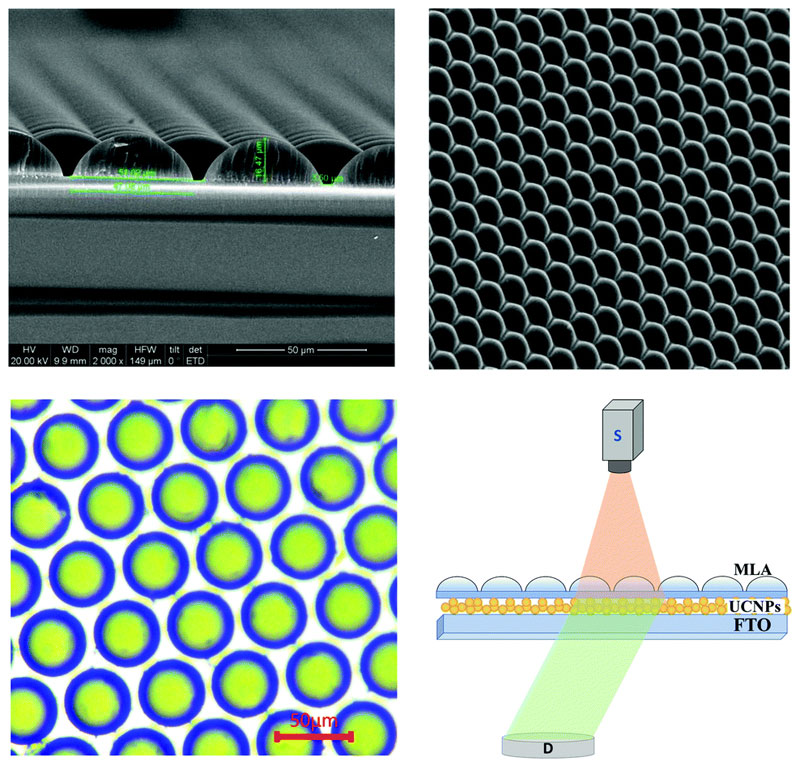
3rd November 2019 Nanotech solar cells boost efficiency by 10% Researchers at the KTH Royal Institute of Technology, Sweden, have developed a new film that is applied to solar cells, which combines nanocrystals and microlenses to capture infrared light. This can increase the solar energy conversion efficiency by 10% or more.
Infrared light – while invisible to the naked eye – accounts for half of all solar radiation hitting the Earth's surface, yet ordinary solar energy systems have limited ability in converting it to power. A breakthrough in research at the KTH Royal Institute of Technology, Sweden, could change that. A team led by Hans Ågren, Professor of Theoretical Chemistry at KTH, has developed a film that can be applied on top of ordinary solar cells, enabling them to use infrared light in energy conversion and boost their efficiency by 10%. Furthermore, he says even greater increases are possible in the near future. "We have achieved a 10% increase in efficiency without yet optimising the technology," Ågren explains. "With a little more work, we estimate that a 20 to 25% increase in efficiency could be achieved." Photosensitive materials used in solar cells, such as the mineral perovskite, have a limited ability to respond to infrared light. The solution, developed with KTH researchers Haichun Liu and Qingyun Liu, was to combine nanocrystals with chains of microlenses. "The ability of the microlenses to concentrate light allows the nanoparticles to convert the weak IR light radiation to visible light useful for solar cells," Ågren says. The breakthrough has been patented, and is published in the scientific journal Nanoscale.
Comments »
If you enjoyed this article, please consider sharing it:
|








